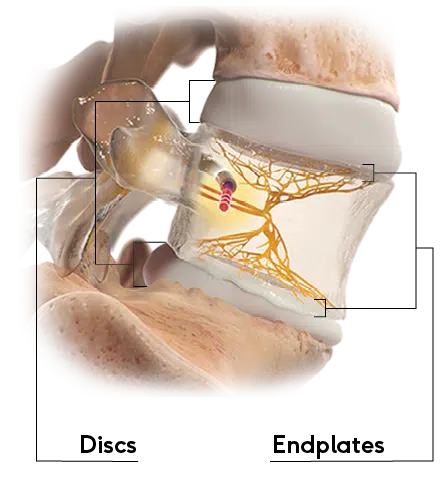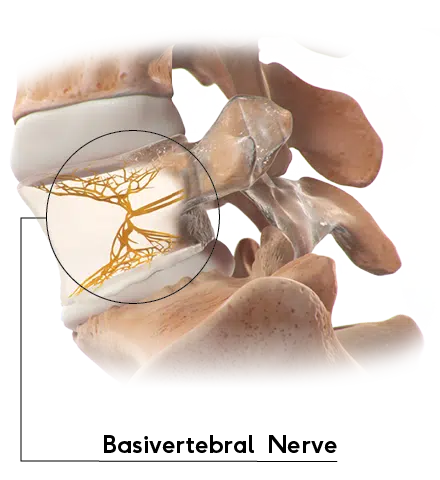
That’s the living proof of the Intracept™ Procedure: The only targeted way to relieve vertebrogenic chronic low back pain (CLBP). Here’s the basics:
The Intracept™ Procedure Can Relieve the Pain
The Intracept Procedure is a same-day procedure performed in an outpatient surgery center. Unlike some major surgeries, the Intracept Procedure is implant-free and preserves the overall structure of the spine.
The Intracept Procedure involves heating the basivertebral nerve with a radiofrequency probe to stop it from sending pain signals to the brain. Patients are under anesthesia, and the procedure generally lasts an hour.
Different from other nerves in the body that regenerate, the BVN has not shown an ability to grow back as a pain-transmitting nerve following the Intracept Procedure.

Vertebrogenic Pain Is Understood
Vertebrogenic pain is a distinct type of chronic low back pain caused by damage to vertebral endplates, the interface between the disc and the vertebral body. Disc degeneration, and the wear and tear that occurs with everyday living, produces stresses on the endplates that damage them, leading to inflammation and vertebrogenic pain.
A Certain Nerve Is the Key
Vertebral endplates – found on either side of the disc – can become damaged over time, causing inflammation and back pain. The basivertebral nerve (BVN), found within the vertebrae, carries these back pain signals from the inflamed endplates to the brain.
Lasting Pain Relief
Most people start to feel pain relief within two weeks after the Intracept Procedure. And what separates the Intracept Procedure from other radiofrequency ablation procedures is its long-term relief after a single procedure.
Patients in a recent study reported their improvements in function and pain relief lasted more than 5 years following the procedure – with over a third of these patients indicating they were totally pain-free.1

Step One: Access the Pedicle
Under fluoroscopic guidance, the Intracept™ Introducer Cannula Assembly is advanced through the pedicle.
Step Two: Create the Channel
The Intracept™ Curved Cannula Assembly is used to create a channel to the trunk of the basivertebral nerve.
Step Three: Place the RF Probe
The Intracept™ RF Probe is inserted into the curved path and placed at the trunk of the basivertebral nerve.
Step Four: Ablate the BVN
The Intracept™ RF Generator is used to deliver radiofrequency energy that ablates the basivertebral nerve.
- Fischgrund J, Rhyne A, Macadaeg K, et al. Long-term outcomes following intraosseous basivertebral nerve ablation for the treatment of chronic low back pain: 5-year treatment arm results from a prospective randomized double-blind sham-controlled multi-center study. Eur Spine J. 2020;29(8):1925-34. http://doi.org/10.1007/s00586-020-06448-x